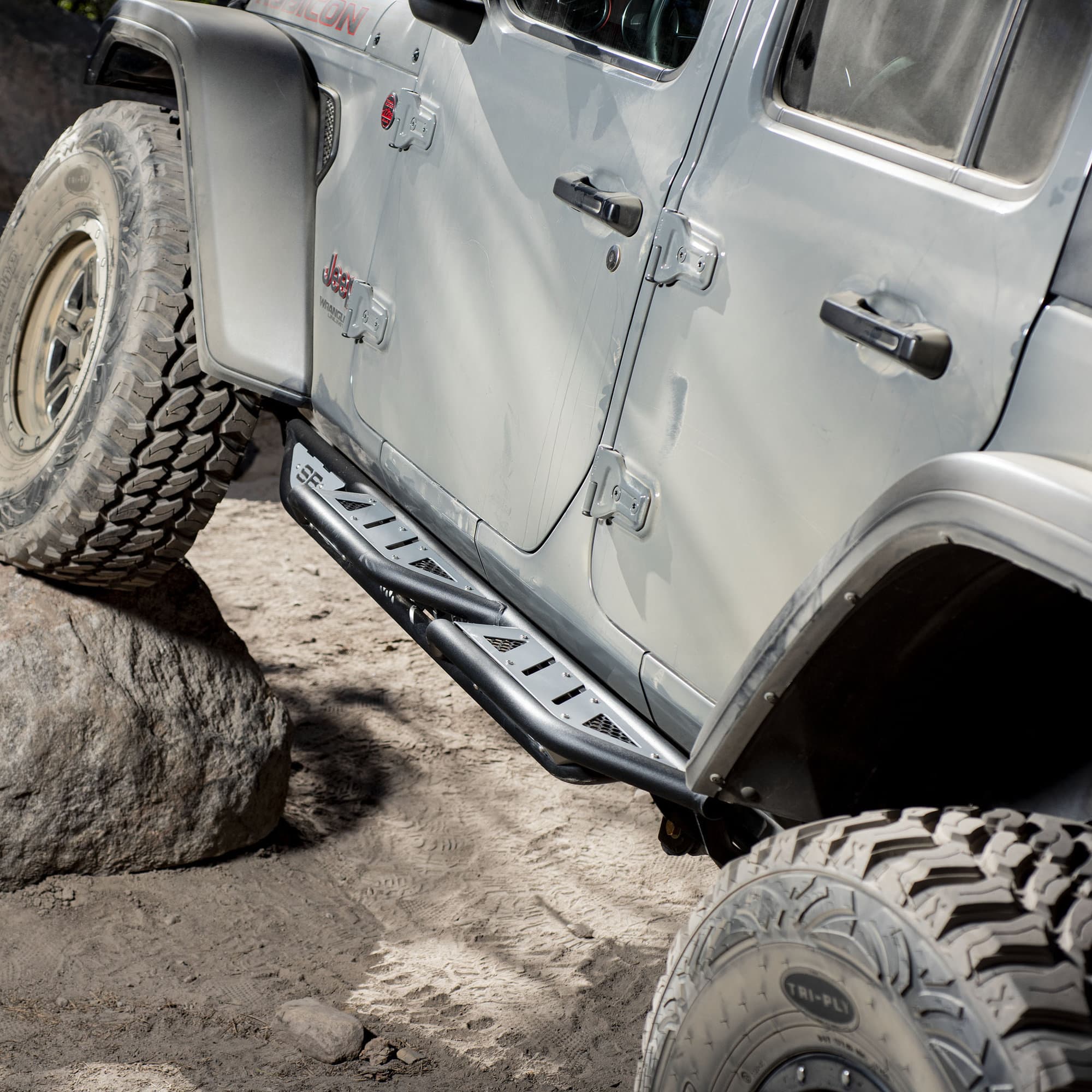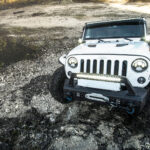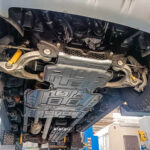
Side steps: what they are and how to use them. Tips for choosing the right gear for your off-road vehicle
When preparing your off-road vehicle for challenging terrain, you likely focus on protection first—installing bumpers, snorkels, winches, and more. B But have you considered how important it is to protect the sides of your vehicle? Side steps play a crucial role in both protection and accessibility. Let’s explore their benefits and how to choose the right ones.
Why do off-road vehicles need side steps? Benefits of additional side protection
Design and styling
Side steps are often an essential part of extra gear for off-road vehicles. They serve various purposes, from purely aesthetic to practical. At first glance, they add character and highlight the size – both literal and figurative – of the vehicle. Especially if you choose a steel model with aggressive design, which can also widen the vehicle’s profile.
Accessibility and comfort
This logically leads to the second role of side steps, which is simply to make getting in easier. This is really helpful for off-road vehicles that are often high lifted and have big wheels. Even in standard versions, it can be a necessary convenience, especially for shorter drivers. That’s why they sometimes come as factory-installed features. For expedition vehicles or pickups, they also make it easier to access the roof and roof racks.
Protection and safety
What’s most important —and quite interesting from our perspective— is that side steps serve a crucial role off-road. If you choose a model made of sturdy metal or a tubular version, you’ll also get protection for the sides of the vehicle and the body from scratches, which can easily happen when navigating through branches or rocks. From an off-roader’s point of view, one of the coolest features of certain types of side steps is their ability to help slide over obstacles before the wheels make contact with the ground.
Types of side steps: installation methods
While side steps can be categorized as either aesthetic or functional, they can also be divided into three types based on their mounting method—directly influencing their purpose and performance.
Frame-mounted side steps (including rock sliders)
As the name suggests, these steps are mounted directly to the vehicle’s frame and are usually made of steel. This makes them strong enough to support the weight of the vehicle if it gets “hung up” in a deep rut. These steps provide greater safety during off-road adventures, as you can be sure they won’t damage the body. However, steel is more prone to rust, so if you often scrape off the paint during off-road trips, they will wear out faster.
Frame-mounted steps come in tubular, flat, or angled designs (angled toward the body). The angled ones are usually called rock sliders, which give you extra protection against body damage. Tubular steps also allow you to use a hi-lift jack for vehicle recovery, while flat steps should have designated hi-lift jacking points. Plus, all of these options add a rugged, off-road style to your vehicle.
Key characteristics:
- Made of steel, providing solid protection for the vehicle’s sides.
- Available in flat, tubular, and angled (rock slider) designs.
- Rock sliders offer the highest level of body protection.
- Some models are designed for hi-lift jacking, with designated attachment points (always included in tubular versions).
Body-mounted side steps
Unlike frame-mounted steps, some models are bolted directly to the vehicle’s body. They come in similar variants – tubular and flat – but differ in installation method and funcionality. With tubular side steps, their look doesn’t always mean they’re strong enough for hi-lift jacking, unlike the frame-mounted ones. This type of step simply isn’t designed for that.
Because they are attached directly to the body, these steps primarily serve as an aid for easier entry and exit, while also enhancing the vehicle’s appearance. They offer limited protection against light scratches from branches, but in extreme off-road conditions, they may break off, potentially damaging both the step and the vehicle’s body.
Key characteristics:
- Made of aluminum which provides corrosion protection or made of steel.
- Available in flat tubular designs.
- Not designed for hi-lift jacking by default.
- Intended only to support a person’s weight, but not the vehicle’s if it gets stuck or suspended on obstacles.
Electric side steps (automatic retracting steps)
The last type of side steps we’ll cover is electric retractable steps, which are typically mounted to the vehicle’s body. The main installation difference lies in the wiring setup, which must be securely connected to the battery.
Electric steps are popular in civilian vehicles, especially city SUVs due to their sleek design and convenience. Unlike fixed steps, they remain hidden when not in use, maintaining the vehicle’s clean look. They also extend lower than standard steel steps, thanks to their retractable design, making entry and exit even easier. Thanks to their retractable design, they reduce the risk of snagging on off-road obstacles.
However, they are not ideal for extreme off-road use unless the terrain is relatively safe. A strong impact – such as hitting a branch or rolling over rough terrain – could severely damage the mechanism, preventing the steps from deploying and rendering them useless.
Key characteristics:
- Made of aluminum, offering a lightweight yet durable structure.
- Available as flat steps, often featuring a non-slip surface and a stylish finish.
- Fully automated, extending and retracting as needed.
- Do not negatively affect the vehicle’s aerodynamics.
- Provide comfort and functionality, especially for everyday use.
Choosing and using side steps
In summary, if you’re looking for side steps for your off-road vehicle that offer real protection during your adventures, steel, frame-mounted steps are the best choice. If that’s not an option, body-mounted steps can still provide convenience, but keep in mind that they won’t support the vehicle’s weight if it gets stuck on an obstacle. However, if your priority is comfort and functionality for everyday driving, electric retractable steps are an excellent choice, offering modern convenience while maintaining a sleek look.











Comments ()